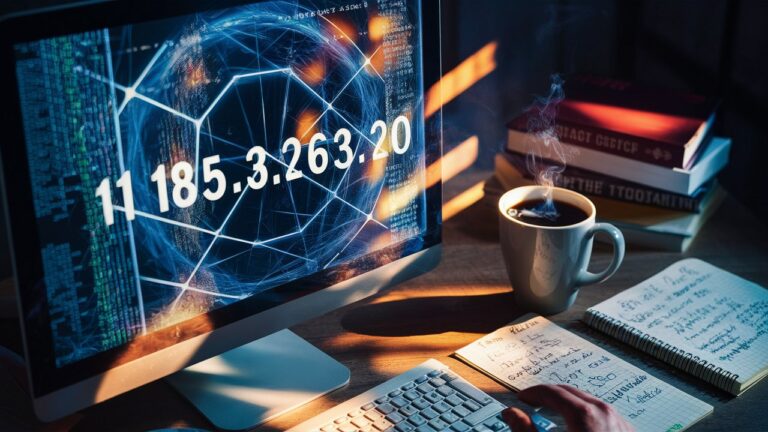Introduction
In the vast expanse of the internet, every device connected to the network is identified by a unique numerical label: an Internet Protocol (IP) address. Among these, the IP address 185.63.263.20 has piqued curiosity due to its unusual structure and potential implications. This article explores the technical, geographical, and security-related aspects of this IP address, addressing common questions and misconceptions. Whether you’re a cybersecurity enthusiast, a network administrator, or simply intrigued by digital identifiers, this comprehensive guide will shed light on the complexities surrounding 185.63.263.20.
Understanding IP Address Structure and Validity
An IP address is a 32-bit numerical label divided into four octets (e.g., 185.63.263.20), each ranging from 0 to 255. However, the third octet in 185.63.263.20 (263) exceeds this limit, rendering the address technically invalid. This anomaly raises immediate red flags, as legitimate IP addresses must conform to this structure to function within global networks. Invalid IPs like this often result from typographical errors, misconfigurations, or even deliberate attempts to mimic legitimate addresses for malicious purposes. Understanding this foundational flaw is critical to analyzing the broader implications of 185.63.263.20.
Ownership and Geolocation of 185.63.263.20
Legitimate IP addresses are assigned by organizations like the Internet Assigned Numbers Authority (IANA) to regional registries. However, since 185.63.263.20 is invalid, it cannot be assigned to any entity or location. Geolocation tools attempting to map this IP would return errors or inaccurate data. In contrast, valid IPs within the 185.63.x.x range might belong to specific internet service providers (ISPs) or enterprises, but 263 in the third octet disrupts this pattern. This highlights the importance of verifying IP validity before attributing ownership or geographic origin.
Security Implications of Invalid IP Addresses
Invalid IPs like 185.63.263.20 are often exploited in cyberattacks. For instance, attackers may use such addresses in phishing campaigns, malware distribution, or Distributed Denial-of-Service (DDoS) attacks to confuse monitoring systems. Security professionals must remain vigilant, as firewalls and intrusion detection systems (IDS) might misinterpret these addresses or fail to block them entirely. Additionally, typosquatting—a tactic where attackers register domains with slight misspellings—can extend to IP addresses, making 185.63.263.20 a potential decoy in larger attack strategies.

Case Studies: How Invalid IPs Are Exploited in the Wild
In 2021, a cybersecurity firm documented a campaign where attackers used invalid IPs to bypass blacklists. By embedding non-compliant addresses like 185.63.263.20 in phishing emails, they evaded detection long enough to compromise unsuspecting users. Another case involved a botnet that rotated through invalid IPs to avoid traceability. These examples underscore the need for advanced threat intelligence tools capable of flagging irregularities in IP structures, even if they appear innocuous at first glance.
Frequently Asked Questions (FAQs)
1. Why is 185.63.263.20 considered invalid?
The third octet (263) exceeds the maximum allowable value of 255, violating IP address formatting rules.
2. Can 185.63.263.20 be used for legitimate purposes?
No. Devices or networks cannot route traffic to or from invalid IPs due to their non-compliance with global standards.
3. Who “owns” this IP address?
Since it’s invalid, no entity owns it. Ownership claims would likely be fraudulent or mistaken.
4. How do geolocation services handle invalid IPs?
Most tools either return an error or default to generic locations, but results are unreliable.
5. Are there security risks associated with this IP?
Yes. Attackers may use it in scams or exploits, emphasizing the need for vigilance in network monitoring.
Conclusion
The IP address 185.63.263.20 serves as a fascinating case study in the importance of technical compliance and cybersecurity awareness. While its structural flaws render it non-functional, its potential misuse underscores the evolving tactics of cybercriminals. By understanding the mechanics of IP addresses, validating their formats, and deploying robust security measures, individuals and organizations can better safeguard their digital ecosystems. As the internet continues to expand, staying informed about such anomalies will remain a cornerstone of safe online practices.
This article not only demystifies 185.63.263.20 but also equips readers with actionable insights to navigate the complexities of IP addresses in an increasingly interconnected world.
